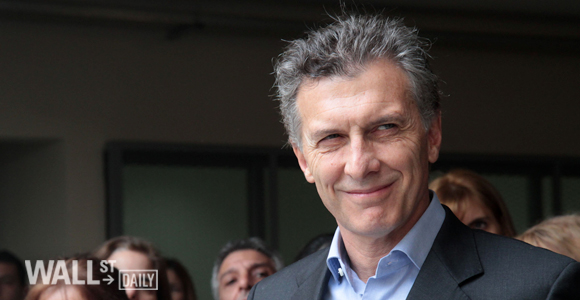
In the early 20th century, Argentina was ranked as one of the 10 richest countries in the world. People used the phrase “rich like Argentina” to describe the fabulously wealthy. It was the future.
Then a combination of factors made the country come crashing down – including military dictatorships, the populism that was Peronism, various inept rulers, and the recently ousted socialist President Cristina Fernandez.
No one factor stands out. As author and Harvard economist Rafael Di Tella told the Economist, “If a guy has been hit by 700,000 bullets, it’s hard to work out which one of them killed him.”
Today, Argentina is ranked 107th on Transparency International’s list measuring public corruption. And that’s just the tip of the iceberg.
But cry no more for Argentina…
New Leadership Holds Promise
The election of the center-right candidate Mauricio Macri holds much promise for Argentina.
And investors took notice. Argentina’s stock index, the Merval, soared 40% from the start of October alone, anticipating his victory.
The gain in bond prices was even more spectacular. Yields on Argentine 10-year bonds fell to just 2.25% from 9%!
Well-known investors from George Soros to Daniel Loeb have been piling into the Argentine markets.
Macri, who will take office on December 10, is already off to a good start. He’s forming a strong economic team, led by former central bank chief Alfonso Prat-Gay.
Prat-Gay was considered a “magician” early in the last decade when he oversaw a huge drop in inflation, from 40% to 5%.
Monumental Problems
Prat-Gay and Macri will certainly need to work magic. Outgoing President Fernandez is leaving them with what might politely be called an economic disaster.
Inflation is near 20%, the country’s foreign reserves have dwindled to almost nothing, there are capital controls, the exchange rate of the Argentine peso is overvalued, and the central bank is printing money like mad to fund the fiscal deficit, which runs at 7% of GDP.









Leave A Comment